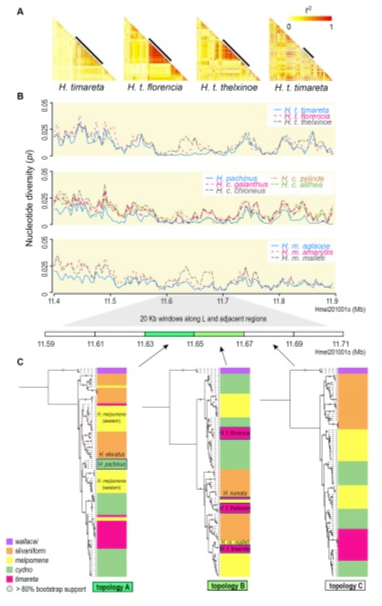Our research tackles some fundamental evolutionary questions such as speciation, adaptation, and introgression. In particular, our work focuses on integrating experimental and computational approaches to study adaptive introgression in model and non-model organisms. Our research interests also include investigating anti-predator adaptation such as mimicry, aposematic coloration, and camouflage in insects.
The diversification of butterfly wing patterns: Progress and prospects
Butterfly wings display rich phenotypic diversity and are associated with complex biological functions, thus serving as an important evolutionary system to address the genetic basis and evolution of phenotypic diversification. We review recent butterfly studies that revealed complex functions underlying diversified wing patterns and describe the genetic and environmental factors involved in wing pattern determinations. These factors lead to inter-specific divergence, genetic polymorphism, and phenotypic plasticity, which in many cases are decided by several key genes. We also summarize the research advances on gene co-option as an important origin of functional complexity and evolutionary novelty. These findings reveal a pattern of evolutionary innovation within a constrained developmental framework during butterfly wing morphogenesis, but further research is required to gain a systematic and comprehensive understanding.
link: https://linkinghub.elsevier.com/retrieve/pii/S2214-5745(23)00134-7
link: https://linkinghub.elsevier.com/retrieve/pii/S2214-5745(23)00134-7
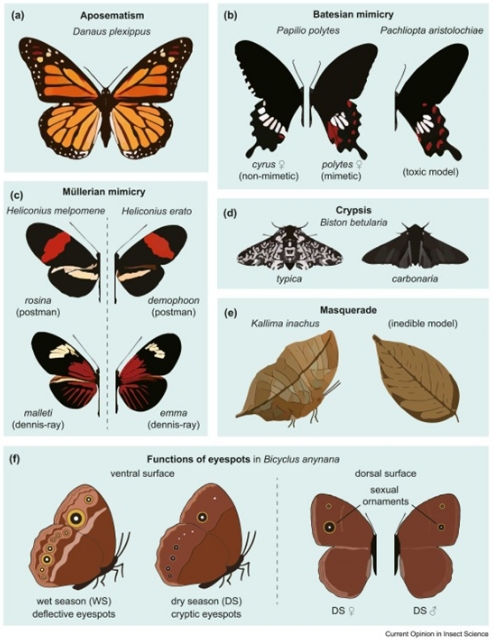
Potential and progress of studying mountain biodiversity by means of butterfly genetics and genomics
Mountains are rich in biodiversity, and butterflies are species-rich and have a good ecological and evolutionary research foundation. This review addresses the potential and progress of studying mountain biodiversity using butterflies as a model. We discuss the uniqueness of mountain ecosystems, factors influencing the distribution of mountain butterflies, representative genetic and evolutionary models in butterfly research, and evolutionary studies of mountain biodiversity involving butterfly genetics and genomics. Finally, we demonstrate the necessity of studying mountain butterflies and propose future perspectives. This review provides insights for studying the biodiversity of mountain butterflies as well as a summary of research methods for reference.
link: https://www.sciencedirect.com/science/article/pii/S1673852723001364
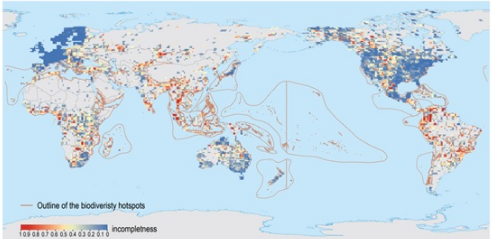
Inferring historical introgression with deep learning
Resolving phylogenetic relationships among taxa remains a challenge in the era of big data due to the presence of genetic admixture in a wide range of organisms. Rapidly developing sequencing technologies and statistical tests enable evolutionary relationships to be disentangled at a genome-wide level, yet many of these tests are computationally intensive and rely on phased genotypes, large sample sizes, restricted phylogenetic topologies, or hypothesis testing. To overcome these difficulties, we developed a deep learning-based approach, named ERICA, for inferring genome-wide evolutionary relationships and local introgressed regions from sequence data. ERICA accepts sequence alignments of both population genomic data and multiple genome assemblies, and efficiently identifies discordant genealogy patterns and exchanged regions across genomes when compared with other methods. We further tested ERICA using real population genomic data from Heliconius butterflies that have undergone adaptive radiation and frequent hybridization. Finally, we applied ERICA to characterize hybridization and introgression in wild and cultivated rice, revealing the important role of introgression in rice domestication and adaptation. Taken together, our findings demonstrate that ERICA provides an effective method for teasing apart evolutionary relationships using whole genome data, which can ultimately facilitate evolutionary studies on hybridization and introgression.
link: https://doi.org/10.1093/sysbio/syad033
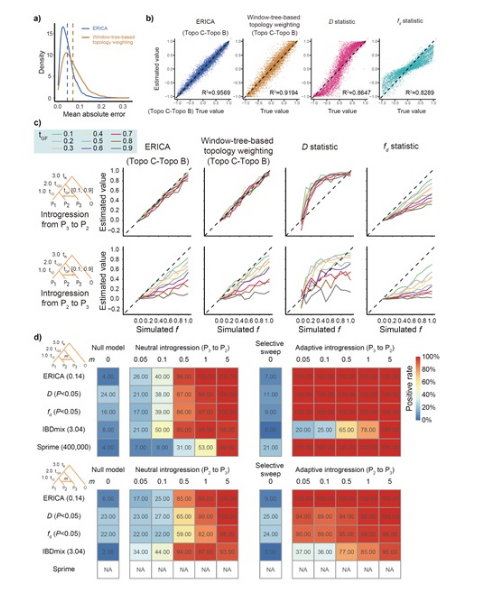
Imperfect ant mimicry contributes to local adaptation in a jumping spider
Putative ant mimicry is a remarkable example of an evolutionary strategy that can be well integrated into the framework of natural selection and adaptation. However, challenges remain in understanding imperfect ant mimicry. Here, we combine trait quantification and behavioral assays to investigate imperfect ant mimicry in the jumping spider Siler collingwoodi. We performed trajectory analysis and gait analysis to show that the locomotor characters of S. collingwoodi generally resemble those of the putative ant models, supporting the multiple models hypothesis. We then performed background-matching analysis, revealing that body coloration may be involved in background camouflage. We further carried out antipredation assays and found that S. collingwoodi had a significantly lower risk of predation than nonmimetic salticids, suggesting an overall protective effect of Batesian mimicry. Our findings quantitatively demonstrate a combination of mimicry and camouflage in S. collingwoodi and thus highlight the significance of a complex phenomenon driven by natural selection.
link: https://www.cell.com/iscience/fulltext/S2589-0042(23)00824-6
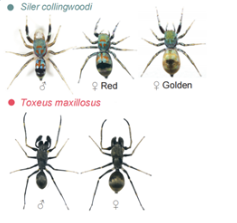
The evolutionary mechanism of speciation in butterflies
Chemosensing plays a fundamental role in the life history of these groups of butterflies and in the establishment of reproductive isolation. However, chemical communication involves synergistic sensory and accessory functions, and it remains challenging to investigate the molecular mechanisms underlying behavioral differences. Neotropical Heliconius butterflies are well known for Müllerian mimicry, intricate behaviors, and multiple instances of radiation, which are ideal system for speciation. Here, we examine the gene expression profiles and genomic divergence of three sensory tissues (antennae, legs, and mouth parts) between sexes (females and males) and life stages (different adult stages) in two hybridizing butterflies, Heliconius melpomene and Heliconius cydno. We revealed the evolution of chemosensing in incipient speciation of butterflies between sexes and life stage.
Link: https://doi.org/10.1093/molbev/msac225
Link: https://doi.org/10.1093/molbev/msac225
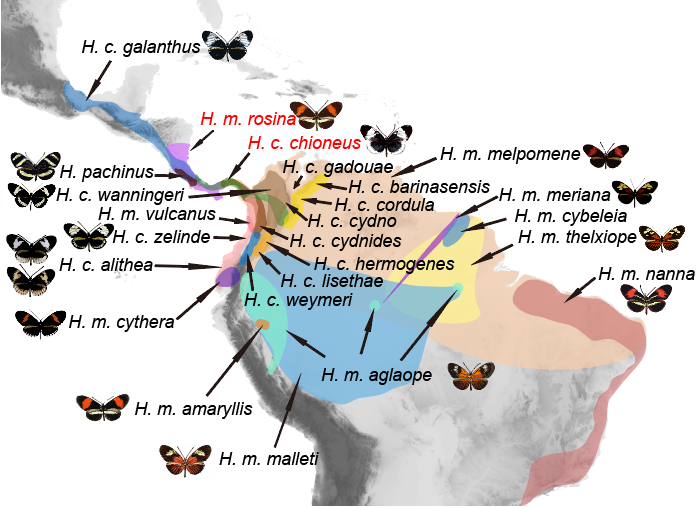
The evolution and diversification of oakleaf butterflies
Oakleaf butterflies in the genus Kallima have a polymorphic wing phenotype enabling these insects to masquerade as dead leaves. This iconic example of protective resemblance provides an interesting evolutionary paradigm that can be employed to study biodiversity. We integrated multi-omic data analyses and functional validation to infer Kallima’s evolutionary history and investigate the genetic basis of their variable leaf wing patterns. We find that Kallima butterflies diversified in the eastern Himalayas and dispersed to East and Southeast Asia. Moreover, we find that leaf wing polymorphism is controlled by the wing patterning gene, cortex, which has been maintained in Kallima by long-term balancing selection. Our results provide macroevolutionary and microevolutuoanry insights into a model species originating from a mountain ecosystem.
Link:https://www.sciencedirect.com/science/article/abs/pii/S0092867422007942
Link:https://www.sciencedirect.com/science/article/abs/pii/S0092867422007942
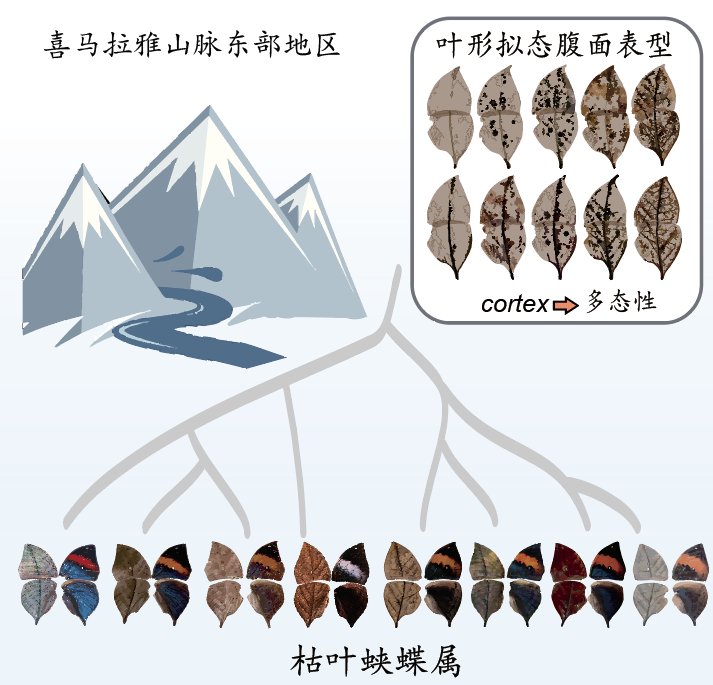
A widely diverged locus among Heliconius butterflies may be linked to locomotor adaptation
Heliconius butterflies have undergone adaptive radiation and therefore serve as an excellent system for exploring the continuum of speciation and adaptive evolution. However, there is a long-lasting paradox between their convergent mimetic wing patterns and rapid divergence in speciation. Here, we characterize a locus that consistently displays high divergence among Heliconius butterflies and acts as an introgression hotspot. We further show that this locus contains multiple genes related to locomotion and conserved in Lepidoptera. In light of these findings, we consider that locomotion traits may be under selection, and if these are heritable traits that are selected for, then they might act as species barriers.
Link:https://advances.sciencemag.org/content/7/32/eabh2340
Link:https://advances.sciencemag.org/content/7/32/eabh2340
